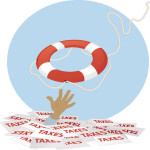Fake Wells Fargo accounts opened without consent may adversely affect victims’ credit scores.
Are you affected?
Wells Fargo employees opened an estimated 500,000 unauthorized credit card accounts and more than 1 million deposit accounts.
Your credit score is figured in part on new credit accounts and available credit. If you banked with Wells Fargo, their shenanigans may be messing with your apparent credit worthiness.
What’s a credit score
A credit score is the product of a mathematical formula, created by a for-profit company, predicting the risk that you won’t repay a loan.
The CFPB describes a credit score.
A credit score predicts how likely you are to pay back a loan on time. A scoring model uses information from your credit report to create your credit score. Your credit score starts with the information about you from your credit report. A mathematical formula – called a scoring model – is then used to create your credit score.
While lots of lenders use credit scores to make credit decisions and pricing, there is no one credit score. One credit scoring company will have several different scoring models that they sell to lenders.
Lots of consumers are fixated on their credit scores, and ask me as a bankruptcy attorney what bankruptcy will do to their score, credit scoring is subject to change. It is an unregulated business.
Credit score starts with credit report
The information in your credit report is the foundation of calculating a credit score.
That’s where the Wells Fargo fake accounts impact your credit score. New credit accounts on your credit report influence perhaps 10% of your score.
Likewise, the amount of unused credit available to you also influences the score.
If Wells Fargo reported the unauthorized accounts to the credit reporting agencies, that information will be folded into your credit report.
Check your credit report
If you banked with Wells Fargo, your first move is to order your credit report and see if you recognize the credit accounts shown there.
You are entitled to a free credit report from each of the three major credit reporting agencies each year. Get your genuinely free report from AnnualCreditReport.com. Other sources that claim to provide a free report often try to suck you in to buying credit monitoring services that you don’t necessarily need.
If you find accounts that you didn’t authorize, you have two action items:
- Call the bank and close the account if you don’t want it.
- Dispute the entry on your credit report and insist it be removed.
You can get more information on what to do from the CFPB.
Watch the news, or return here as the story develops.






